A simple duck liver pâté or mousse, flavored with apples and cognac and served with toast points is a classic way to enjoy duck livers. Instead of topping the crocks with pork fat, I top it with melted jelly for a lighter touch that adds a sweetness that pairs perfectly with liver.
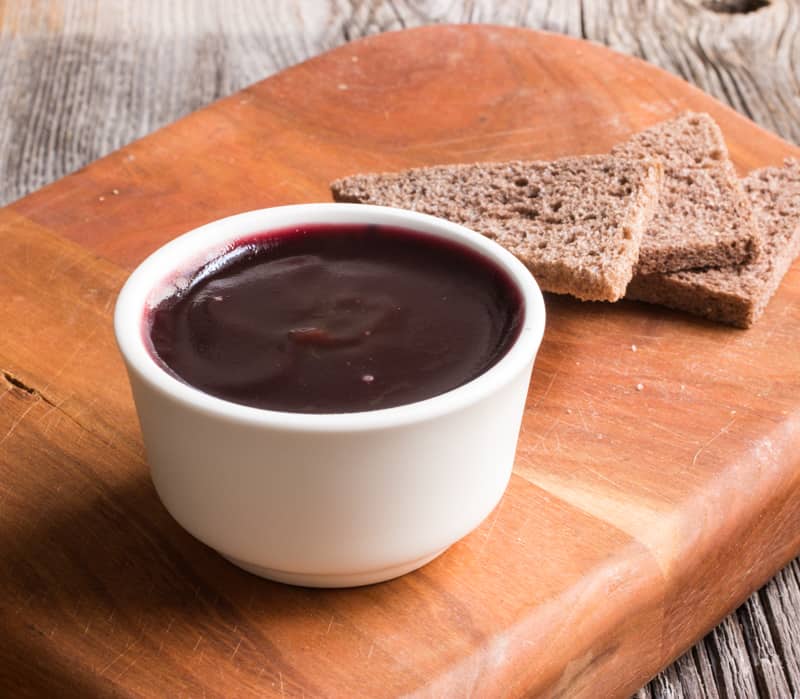
Apples help offset the gamey-ness of liver but super tart crab apples really bring it to another level if you can find some.
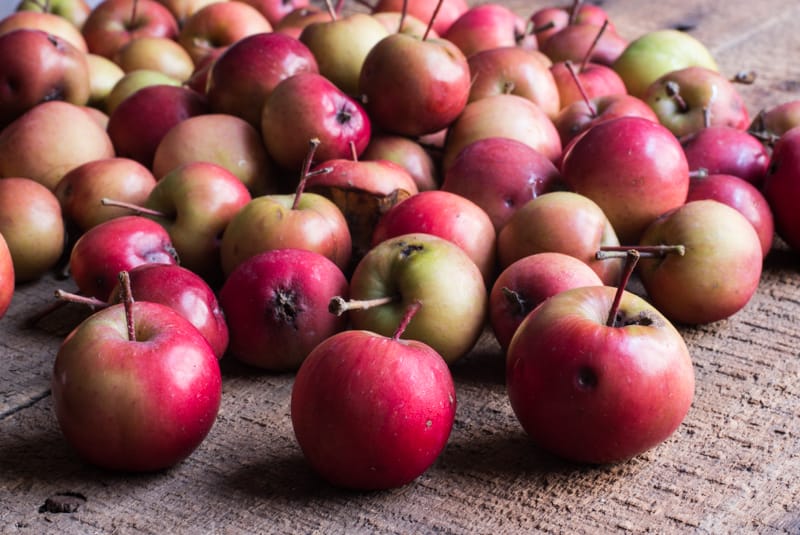
Topping the pate with melted jelly to seal
You'll also notice there's melted jelly on top of the crock of liver. This is a great chef secret to making liver pate.
Livers contain a lot of iron. Besides the gamey taste, organs high in iron react quickly to air. This means that the surface will turn rusty, crusty and brown faster than you can blink if it doesn't have plastic wrap pressed directly onto it, or more traditionally, fat, or aspic.
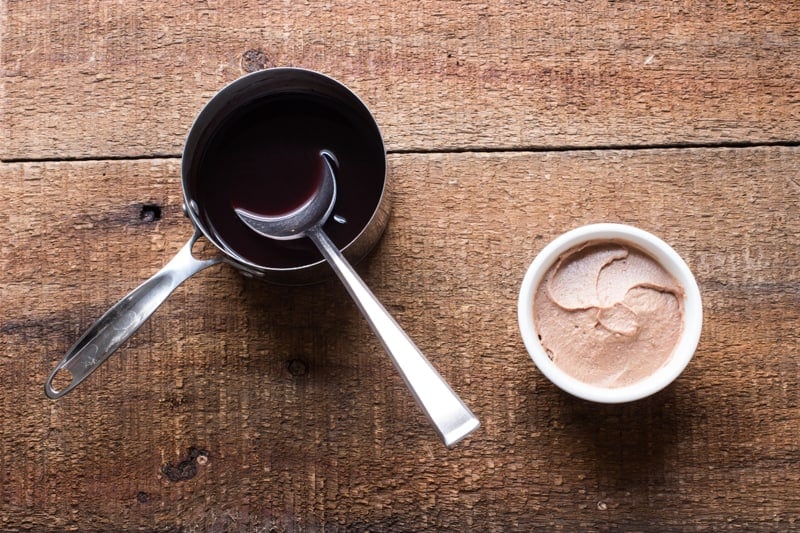
To prevent oxidization of the pate, you need to make sure it isn't exposed to air. You can use jelly, jam or even a compote. Anything that covers it and prevents the air from getting in will work. I had been making an elderberry jelly at the same time, and it made for a great seal on the mousse.
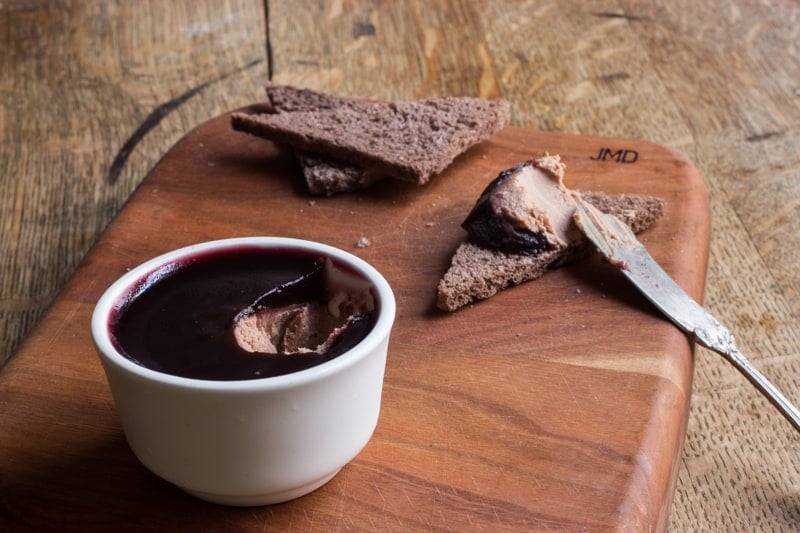
It ends up being a great combo of flavors: savory, sweet, tart, and most importantly-silky smooth pate.
Soaking the liver
Some people will soak their liver in milk before cooking, and that works. Here I use water as I leech the livers in a couple changes of water. Multiple changes of water curb the strong taste of livers. This is especially helpful as duck livers can be more bitter than chicken.
Duck Liver Mousse or Pâté with Cognac
Equipment
- 1 Blender
Ingredients
- 1 lb duck livers trimmed and cleaned
- ½ teaspoon pink salt sodium nitrite (optional)
- Tart crab apples or other apples peeled and diced to yield 2 cups (8 oz)
- ½ cup cognac or brandy
- 1 cup 4 oz yellow sweet onion, diced
- 2 Tablespoons flavorless cooking oil for browning the liver
- 6 oz 1.5 sticks, unsalted butter, chilled and diced
- ½ teaspoon kosher salt plus more to taste
- 1 tablespoon maple syrup
- ⅓ cup heavy cream warmed
- 10 scrapes of nutmeg optional
- High heat cooking oil as needed for browning the livers
Instructions
Leeching the liver
- Cover the pieces of liver in cold water to cover by twice their volume, put a lid on the container, and refrigerate for 24 hours, changing the water, 2 times during the process or as often as you can remember. Consider setting a timer.
Cooking and preparing
- Remove the liver from water, then pat dry. Heat a pan with a small amount of oil, then brown the livers. Add the apples and onions. Add a little water to the pan if it threatens to get too dark. Cook until the apples and onions are completely cooked and starting to color, about 5-10 minutes.
- Add the cognac and carefully ignite the mixture by tilting the pan over a gas burner or with a lighter, then cook until almost all the liquid is gone. Puree the liver mixture in a food processor, adding the pink salt, along with kosher salt and pepper to taste, gradually adding the diced, cold butter and the cream until the mixture is very smooth.
- Pass the mixture through a fine sieve (optional) add the nutmeg, taste and adjust the seasoning, then portion into ramekins and top with a few spoonfuls of melted jelly. Cool to room temperature and refrigerate.
- The pate will keep in the fridge for 3 days, or it can be frozen. I like to portion the pate into 1 cup ramekins, covering them with a film of melted butter or fruit jam to prevent oxidization.

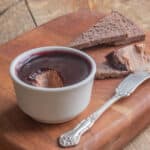
Gwen Ivanhoe
How much milk?
Alan Bergo
2 cups will be fine, I adjusted the recipe. Thank you. All you need is enough to cover the livers.
jack
The beauty of a tart-ish compote topping is the interaction with the rich fattiness. Creamy smoothness is mandatory with a mousse, but a flick of this acidity leaves you wanting more without the overgorging feeling. Thank you for the lesson on overacidity. Will add to the repertoire. Will also visit you for my birthday next week - have not had a memorable tableside Caesar since the Sunwood in 1988. Be well, Chef. -Jack
Alan Bergo
Hi Jack, thanks for your kind words, make sure to tell the hostess you're a friend of mine, and come in between tues-saturday so I can be there to speak to you.